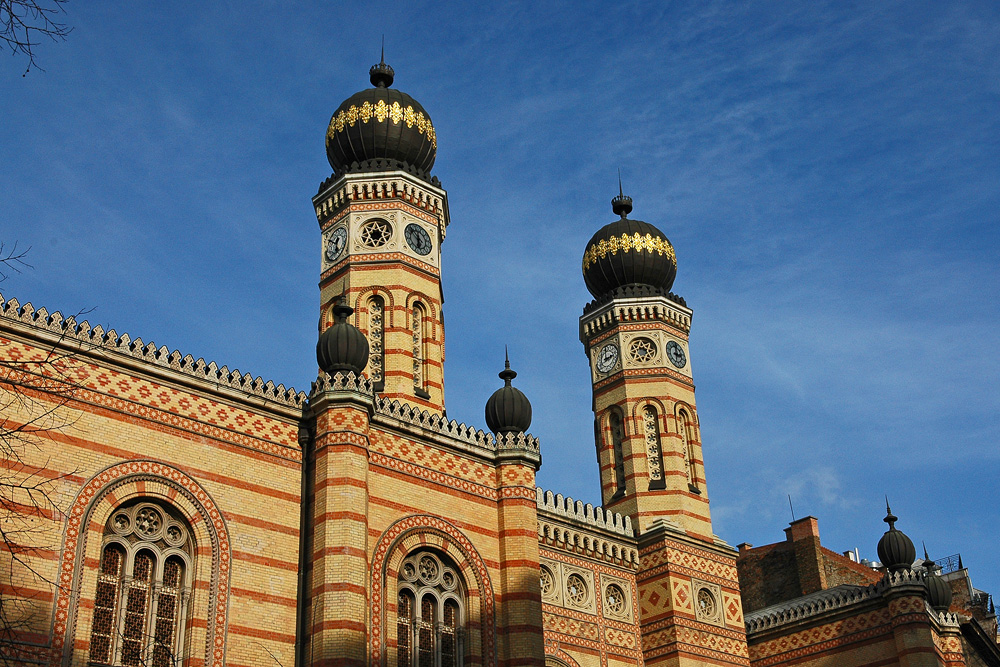Budapest’s Great Synagogue is Europe’s biggest place of Jewish worship and an architectural marvel. It also contains the Hungarian Jewish Museum, and a sober memorial to Hungarian victims of the Holocaust.
Ludwig Förster, a Viennese architect, was commissioned in the 1850s to design a synagogue for Budapest’s large Jewish population. The problem was that no one could decide what “Jewish” architecture would look like. Förster settled on an Arab-like style, a nod to Moorish Spain where many Jews had lived. With its onion-shaped domes, the synagogue is easily lost among Budapest’s buildings from the Ottoman days, but its story is very different.
The synagogue complex contains the Jewish Museum. Memories of the Holocaust are strong here, not least because the street onto which the synagogue looks was the border of a Nazi-era ghetto, where Jews were forced to live. The pavement outside the synagogue is a historical treasure in itself, marking the district’s status as a UNESCO World Heritage Site. Most visitors walk straight over it.
The sparkling interior includes a massive chandelier and rare stained-glass window. On the roof you’ll spot models of Moses’ tablets bearing the Ten Commandments. The Tree of Life is a striking fountain in the shape of branches, doubling as a memorial to the Holocaust.
Budapest’s 7th district is the old Jewish quarter, making the synagogue is a great starting point for exploring the area. You can try it for yourself, or take one of the Jewish Heritage tours available in the vicinity.

- Monday:
-
10:00 - 18:00
- Tuesday:
-
10:00 - 18:00
- Wednesday:
-
10:00 - 18:00
- Thursday:
-
10:00 - 18:00
- Friday:
-
10:00 - 16:00
- Saturday:
- Closed
- Sunday:
-
10:00 - 18:00






